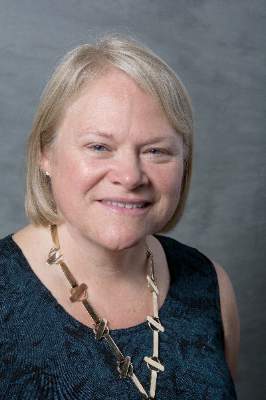User login
Yes: Time to design seamless care
Since the first freestanding birth center opened in the mid-1970s, a demonstration model, designed by Maternity Center Association in New York, the evidence has consistently shown quality and safe care for the mother and newborn in low-risk populations, as well as a reduced cost of care.
The first National Birth Center study published in the New England Journal of Medicine in 1989, as well as the National Birth Center Study II, Outcomes of Care in Birth Centers published in the Journal of Midwifery and Women’s Health in 2013, continue to demonstrate safe outcomes (N. Engl. J. Med. 1989;321:1804-11).
The most recent Birth Center II study collected data from 2007 through 2010 on 15,574 women admitted to 79 midwifery-led freestanding birthing centers (FSBCs) in 33 states. Findings included a rate of 92.8% for normal spontaneous vaginal delivery, 6.1% cesarean delivery, and 84% of women gave birth at the FSBCs, with 12.4% transferred after admission. There were no maternal deaths (J. Midwifery. Womens. Health. 2013;58:3-14).
The most common reason for nonemergent maternal transfer to hospital was prolonged or arrested labor, request for pharmacologic pain relief, and maternal exhaustion. For emergent transfer, the primary reason was nonreassuring fetal heart rate pattern (0.5%) and postpartum hemorrhage (0.2%). Newborn outcomes include transfer of 2.6% and 14 neonatal deaths (7 occurred before admission to the center). The intrapartum fetal mortality rate for admitted mothers was 0.47/1,000 and neonatal mortality rate 0.40/1,000, which is similar to what the United Kingdom found among low-risk women in hospitals, FSBCs, and home births. The primary reason for newborn transfer was respiratory observation.
In 2011, the American College of Obstetricians and Gynecologists Committee Opinion on Planned Home Birth references that hospitals and birthing centers are the safest setting for birth. This was followed up in 2015 with the consensus document on Levels of Maternal Care by ACOG and the Society for Maternal-Fetal Medicine that acknowledges and addresses care provided at birth centers, including the role of caregivers.
The future focus of the FSBCs should include a push to mandate accreditation in all facilities, and ongoing research related to outcomes of: midwifery-led care, provider types, FSBC licensure and/or accreditation status, and types of collegial partnerships. This debate must move from a polarizing discussion of “either/or” to “both/and,” which would expand interprofessional collaborations and design seamless care for the growing number of women choosing out-of-hospital birth.
Dr. Breedlove is president of the American College of Nurse-Midwives.
No: Hospitals are still the safest choice
According to analysis of currently available data, and recognizing that there has not been a randomized controlled trial addressing the site of delivery, hospitals are safer than freestanding birthing centers.
How much safer is a point of contention and depends on several key factors: 1. whether the birthing center is accredited and staffed by certified nurse midwives; 2. how far from the nearest hospital with delivery capability the birthing center is located; and 3. the thoroughness of the selection process in identifying low-risk women who are appropriate candidates to deliver in a birthing center.
Even women correctly classified as low risk may require nonemergent cesarean delivery for failure to progress in labor. Since freestanding birthing centers do not provide cesarean delivery, such women must be transferred to a hospital. If the status of both mother and fetus is reassuring, transfer represents just an inconvenience. Overall, the need for transfer arises fairly often, especially in first pregnancies.
However, unexpected emergencies like cord prolapse can and do occur in the course of labor in low-risk women. Hospitals can respond with immediate cesarean delivery, whereas the only recourse for birthing centers is emergency transfer to a hospital.
The idea of a safety net is the No. 1 reason why women choose to deliver in hospitals and that safety net covers not only their newborns, but women themselves. A second reason is the availability of epidural anesthesia for relief of pain in labor.
In answer to the question of whether birthing centers are a safe alternative to hospitals for delivering babies, I would say it depends on women’s tolerance of risk. Adverse outcomes at freestanding birthing centers are uncommon, but some of those that occur could be prevented in a hospital setting.
One compromise may be to locate birthing centers inside hospitals and this model has been successfully implemented in a number of cities across the United States. This suggestion dates back a quarter of a century but is still meritorious today (N. Engl. J. Med. 1989;321:1824-5). Could it be a way for women to have their cake and eat it too?
Dr. Yeomans is the chair of the department of ob.gyn. at Texas Tech University in Lubbock.
Yes: Time to design seamless care
Since the first freestanding birth center opened in the mid-1970s, a demonstration model, designed by Maternity Center Association in New York, the evidence has consistently shown quality and safe care for the mother and newborn in low-risk populations, as well as a reduced cost of care.
The first National Birth Center study published in the New England Journal of Medicine in 1989, as well as the National Birth Center Study II, Outcomes of Care in Birth Centers published in the Journal of Midwifery and Women’s Health in 2013, continue to demonstrate safe outcomes (N. Engl. J. Med. 1989;321:1804-11).
The most recent Birth Center II study collected data from 2007 through 2010 on 15,574 women admitted to 79 midwifery-led freestanding birthing centers (FSBCs) in 33 states. Findings included a rate of 92.8% for normal spontaneous vaginal delivery, 6.1% cesarean delivery, and 84% of women gave birth at the FSBCs, with 12.4% transferred after admission. There were no maternal deaths (J. Midwifery. Womens. Health. 2013;58:3-14).
The most common reason for nonemergent maternal transfer to hospital was prolonged or arrested labor, request for pharmacologic pain relief, and maternal exhaustion. For emergent transfer, the primary reason was nonreassuring fetal heart rate pattern (0.5%) and postpartum hemorrhage (0.2%). Newborn outcomes include transfer of 2.6% and 14 neonatal deaths (7 occurred before admission to the center). The intrapartum fetal mortality rate for admitted mothers was 0.47/1,000 and neonatal mortality rate 0.40/1,000, which is similar to what the United Kingdom found among low-risk women in hospitals, FSBCs, and home births. The primary reason for newborn transfer was respiratory observation.
In 2011, the American College of Obstetricians and Gynecologists Committee Opinion on Planned Home Birth references that hospitals and birthing centers are the safest setting for birth. This was followed up in 2015 with the consensus document on Levels of Maternal Care by ACOG and the Society for Maternal-Fetal Medicine that acknowledges and addresses care provided at birth centers, including the role of caregivers.
The future focus of the FSBCs should include a push to mandate accreditation in all facilities, and ongoing research related to outcomes of: midwifery-led care, provider types, FSBC licensure and/or accreditation status, and types of collegial partnerships. This debate must move from a polarizing discussion of “either/or” to “both/and,” which would expand interprofessional collaborations and design seamless care for the growing number of women choosing out-of-hospital birth.
Dr. Breedlove is president of the American College of Nurse-Midwives.
No: Hospitals are still the safest choice
According to analysis of currently available data, and recognizing that there has not been a randomized controlled trial addressing the site of delivery, hospitals are safer than freestanding birthing centers.
How much safer is a point of contention and depends on several key factors: 1. whether the birthing center is accredited and staffed by certified nurse midwives; 2. how far from the nearest hospital with delivery capability the birthing center is located; and 3. the thoroughness of the selection process in identifying low-risk women who are appropriate candidates to deliver in a birthing center.
Even women correctly classified as low risk may require nonemergent cesarean delivery for failure to progress in labor. Since freestanding birthing centers do not provide cesarean delivery, such women must be transferred to a hospital. If the status of both mother and fetus is reassuring, transfer represents just an inconvenience. Overall, the need for transfer arises fairly often, especially in first pregnancies.
However, unexpected emergencies like cord prolapse can and do occur in the course of labor in low-risk women. Hospitals can respond with immediate cesarean delivery, whereas the only recourse for birthing centers is emergency transfer to a hospital.
The idea of a safety net is the No. 1 reason why women choose to deliver in hospitals and that safety net covers not only their newborns, but women themselves. A second reason is the availability of epidural anesthesia for relief of pain in labor.
In answer to the question of whether birthing centers are a safe alternative to hospitals for delivering babies, I would say it depends on women’s tolerance of risk. Adverse outcomes at freestanding birthing centers are uncommon, but some of those that occur could be prevented in a hospital setting.
One compromise may be to locate birthing centers inside hospitals and this model has been successfully implemented in a number of cities across the United States. This suggestion dates back a quarter of a century but is still meritorious today (N. Engl. J. Med. 1989;321:1824-5). Could it be a way for women to have their cake and eat it too?
Dr. Yeomans is the chair of the department of ob.gyn. at Texas Tech University in Lubbock.
Yes: Time to design seamless care
Since the first freestanding birth center opened in the mid-1970s, a demonstration model, designed by Maternity Center Association in New York, the evidence has consistently shown quality and safe care for the mother and newborn in low-risk populations, as well as a reduced cost of care.
The first National Birth Center study published in the New England Journal of Medicine in 1989, as well as the National Birth Center Study II, Outcomes of Care in Birth Centers published in the Journal of Midwifery and Women’s Health in 2013, continue to demonstrate safe outcomes (N. Engl. J. Med. 1989;321:1804-11).
The most recent Birth Center II study collected data from 2007 through 2010 on 15,574 women admitted to 79 midwifery-led freestanding birthing centers (FSBCs) in 33 states. Findings included a rate of 92.8% for normal spontaneous vaginal delivery, 6.1% cesarean delivery, and 84% of women gave birth at the FSBCs, with 12.4% transferred after admission. There were no maternal deaths (J. Midwifery. Womens. Health. 2013;58:3-14).
The most common reason for nonemergent maternal transfer to hospital was prolonged or arrested labor, request for pharmacologic pain relief, and maternal exhaustion. For emergent transfer, the primary reason was nonreassuring fetal heart rate pattern (0.5%) and postpartum hemorrhage (0.2%). Newborn outcomes include transfer of 2.6% and 14 neonatal deaths (7 occurred before admission to the center). The intrapartum fetal mortality rate for admitted mothers was 0.47/1,000 and neonatal mortality rate 0.40/1,000, which is similar to what the United Kingdom found among low-risk women in hospitals, FSBCs, and home births. The primary reason for newborn transfer was respiratory observation.
In 2011, the American College of Obstetricians and Gynecologists Committee Opinion on Planned Home Birth references that hospitals and birthing centers are the safest setting for birth. This was followed up in 2015 with the consensus document on Levels of Maternal Care by ACOG and the Society for Maternal-Fetal Medicine that acknowledges and addresses care provided at birth centers, including the role of caregivers.
The future focus of the FSBCs should include a push to mandate accreditation in all facilities, and ongoing research related to outcomes of: midwifery-led care, provider types, FSBC licensure and/or accreditation status, and types of collegial partnerships. This debate must move from a polarizing discussion of “either/or” to “both/and,” which would expand interprofessional collaborations and design seamless care for the growing number of women choosing out-of-hospital birth.
Dr. Breedlove is president of the American College of Nurse-Midwives.
No: Hospitals are still the safest choice
According to analysis of currently available data, and recognizing that there has not been a randomized controlled trial addressing the site of delivery, hospitals are safer than freestanding birthing centers.
How much safer is a point of contention and depends on several key factors: 1. whether the birthing center is accredited and staffed by certified nurse midwives; 2. how far from the nearest hospital with delivery capability the birthing center is located; and 3. the thoroughness of the selection process in identifying low-risk women who are appropriate candidates to deliver in a birthing center.
Even women correctly classified as low risk may require nonemergent cesarean delivery for failure to progress in labor. Since freestanding birthing centers do not provide cesarean delivery, such women must be transferred to a hospital. If the status of both mother and fetus is reassuring, transfer represents just an inconvenience. Overall, the need for transfer arises fairly often, especially in first pregnancies.
However, unexpected emergencies like cord prolapse can and do occur in the course of labor in low-risk women. Hospitals can respond with immediate cesarean delivery, whereas the only recourse for birthing centers is emergency transfer to a hospital.
The idea of a safety net is the No. 1 reason why women choose to deliver in hospitals and that safety net covers not only their newborns, but women themselves. A second reason is the availability of epidural anesthesia for relief of pain in labor.
In answer to the question of whether birthing centers are a safe alternative to hospitals for delivering babies, I would say it depends on women’s tolerance of risk. Adverse outcomes at freestanding birthing centers are uncommon, but some of those that occur could be prevented in a hospital setting.
One compromise may be to locate birthing centers inside hospitals and this model has been successfully implemented in a number of cities across the United States. This suggestion dates back a quarter of a century but is still meritorious today (N. Engl. J. Med. 1989;321:1824-5). Could it be a way for women to have their cake and eat it too?
Dr. Yeomans is the chair of the department of ob.gyn. at Texas Tech University in Lubbock.


